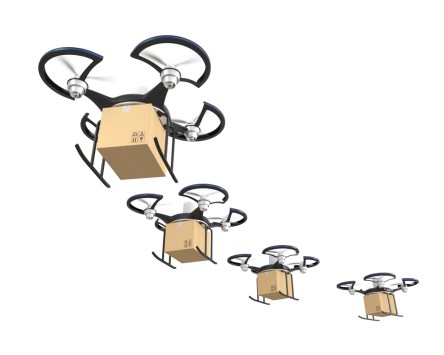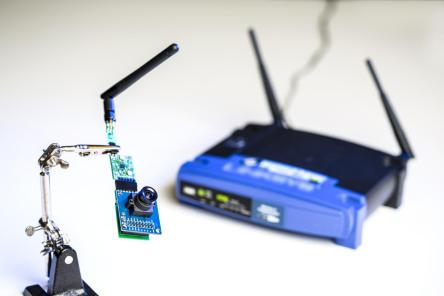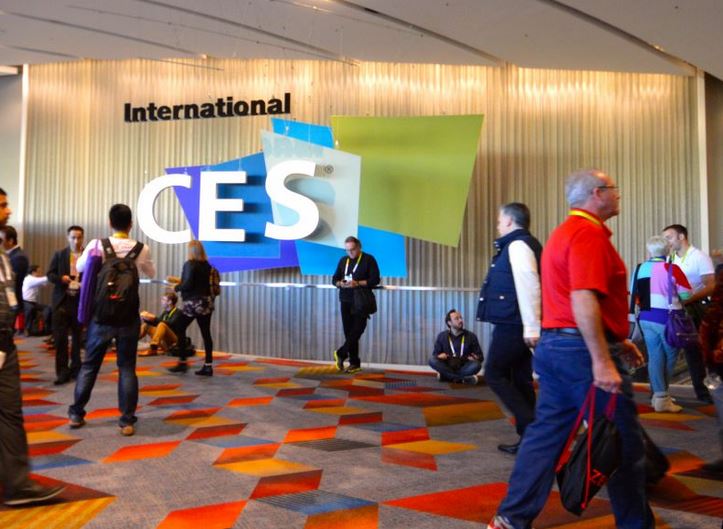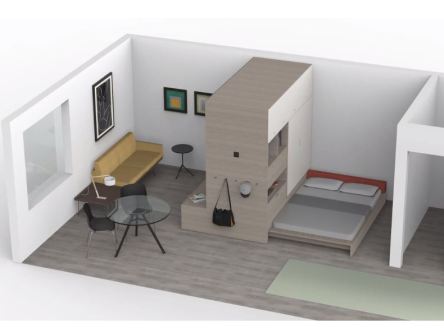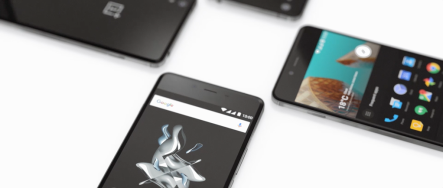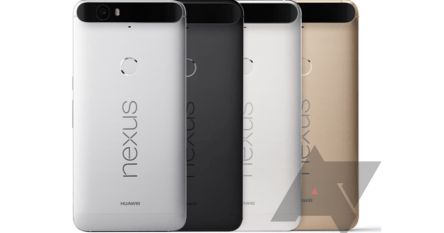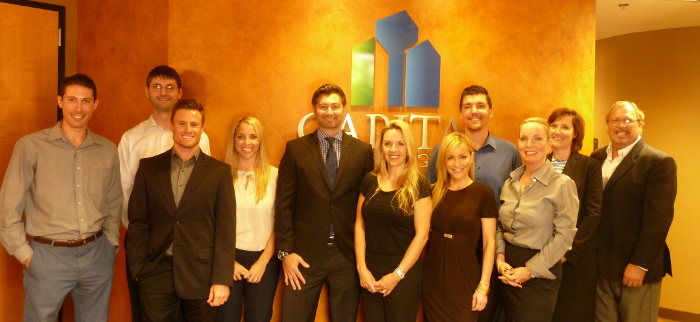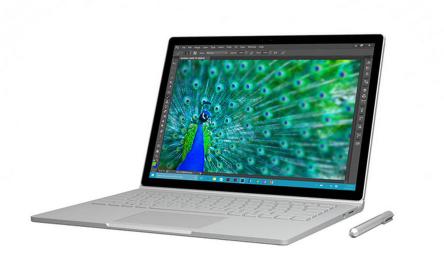There is really only one renewable energy source that can power the whole planet —solar energy. The sun’s energy can power the earth many times over. We’re all familiar with solar technology’s limitless potential, but have yet to actualize its true capability. One of the main hurdles with solar technology is where to put it, as the places where we most need power are lacking space for the big, heavy panels. Silicon Valley startup Ubiquitous Energy, a company spun off by researchers at Massachusetts Institute of Technology and Michigan State University, believes they’ve found the solution—a new type of technology that could span from industrial applications to consumer devices and handheld gadgets—cell phones and tablets that never run out of battery life. Sounds like fantasy, doesn’t it? Until now, solar cells have been only partially transparent and usually a bit tinted, but the startup’s transparent solar cells are so clear that they’re practically indistinguishable from normal panes of glass. Transparent solar is something taught in elementary school: the sun transmits energy in the form of invisible ultraviolet and infrared light, as well as visible light. A solar cell that is engineered to only capture light from the invisible ends of the spectrum, will allow all other light to pass through—thus, it will appear transparent. “It opens a lot of area to deploy solar energy in a non-intrusive way,” Richard Lunt, co-founder of Ubiquitous Energy, said in an interview with Michigan State’s Today blog. “It can be used on tall buildings with lots of windows or any kind of mobile device that demands high aesthetic quality like a phone or e-reader. Ultimately we want to make solar harvesting surfaces that you do not even know are there.” The secret to creating such material is organic chemistry....
Drone Deliveries
Could be around the corner
Drones are unstoppable. Within the next one to three years we’ll receive our orders via drones if the private sector and government work hand in hand. Giants like Google and Amazon, and Wal-Mart have all announced working on developing their own fleet of drones to ship orders. The main setback remains the number of regulatory issues which need ironing out first. Currently, businesses interested in flying drones for commercial purposes need to seek approval from the Federal Aviation Administration on a case-by-case basis. Furthermore, under current drone rules, companies aren’t allowed to fly drones at night and drone operators can’t fly more than one drone at a time—well, except for the special show Intel prepared in collaboration with Ars Electronica Futurelab near Hamburg where four drone operators had each 25 drones under their command. You can watch the thing of beauty in the below video. Earlier this year, FAA Administrator Michael Huerta announced that the government plans to finalize its drone rules for commercial operations by late spring. The FAA enlisted a handful a drone makers, industry advocates, and retailers such as Google to help create the registration system and rules. The respective registration system came online in late December; since then 181,000 drones have been logged in its database. Google has been exploring the use of drones for deliveries over the past three years. Research continues under Dave Vos, head of Google X’s Project Wing experimental drone delivery program. At an aviation industry event in Washington, he stated that drones will be safer than general aviation and that they’ll operate quietly enough so as to not disturb anyone. According to Vos and his Jetsonian vision, people will eventually be transported from one point to another via autonomous airplanes. “Moving people and stuff around...
PoWiFi
Connecting the Internet of Things
Never a dull moment. Technology never stops evolving, thanks to dedicated innovators from all over the world. Now, here’s something that could make Nikola Tesla’s dream a reality: Wi-Fi powered electronics. In this era, we’re surrounded by Wi-Fi almost everywhere we go – local area networking technology allows electronic devices to connect to the network. However, some raised the question: are we using this technology to its full potential? Every time I think of Wi-Fi, my subconscious shares a second with Nikola Tesla, the man who was keen on making wires redundant. Researchers at the University of Washington wish to fulfill Tesla’s dream with PoWiFi. The engineers released a new type of technology that uses a Wi-Fi router—a source of ubiquitous, but untapped energy in indoor environments—to power devices. This new system, dubbed Power Over Wi-Fi (PoWiFi), is one of the most innovative technologies of the year—Popular Science included it in the annual “Best of What’s New” awards. The researchers recently published a paper that shows how they managed to harvest energy from Wi-Fi signals and then to power a simple temperature sensor, a low-resolution grayscale camera, and a charger for a Jawbone activity tracking bracelet. The final paper will be presented next month at the Association for Computing Machinery’s CoNEXT 2015 conference in Germany, on emerging networking experiments and technologies. “For the first time we’ve shown that you can use Wi-Fi devices to power the sensors in cameras and other devices,” said lead author Vamsi Talla, a UW electrical engineering doctoral student. “We also made a system that can co-exist as a Wi-Fi router and a power source—it doesn’t degrade the quality of your Wi-Fi signals while it’s powering devices.” What this means is that electricity flows wirelessly through the air, but don’t...
All Electric SUV
The Mitsubishi eX
Every two years, Tokyo hosts its own Motor Show. This year’s gathering was filled with fun and futuristic designs. Some have Wi-Fi capability, others are developed to drive autonomously, and some concepts come with augmented reality technology. Cars are not what they used to be. This is the case for the Mitsubishi eX concept car, a pure electric SUV with an intriguing design the company claims has a range of 248 miles (400km) on a single charge. The Japanese carmaker mounted underneath the body a battery pack they called “high performance” and “high-capacity.” The battery feeds power to two electric motors, which comprise the concept’s Twin Motor AWD (all-wheel drive). Moreover, it has semi-autonomous functions including an self-parking feature and highway driving assistant. Yet, probably the most attractive feature is the windshield that turns into a display. You’d think such an addition might seem a distraction, but actually it’s quite the opposite. Augmented reality can add web-surfing information and entertainment value to a car, but it can also improve safety. The augmented reality windshield has the special mission to keep the driver’s eyes glued on the road ahead displaying information normally shown on the screen mounted on the dash into the driver’s forward field of vision. Furthermore, a car capable of sensing its surroundings could alert the driver via the windshield about the unseen pedestrian in a blind spot, it could warn of potential collisions with other vehicles, direct lane changes and even illuminate objects in the dark by outlining them on the windshield. The AR windshield is fitted with the Caution Tracking feature which employs driver assistance technology and includes navigation route guidance, vehicle-to-vehicle distance alerts, lane departure warning, and traffic sign alerts to display guidance and warnings on information outside the driver’s...
Online Payment Essentials
NMHC Survey
The newest National Multifamily Housing Council (NMHC) survey offers dozens of helpful insights. The gathered data reflects 120,000 responses from 44 markets nationwide. Though the survey covers everything from home features to community amenities, we found one action item that can save you time, money, and headache: make online payments essential. Of those surveyed, 78 percent of renters prefer to pay rent online. If you aren’t offering online payments, your property instantly poses an inconvenience to renters. By offering online payments, you are reaching renters in a place where they spend much of their time. Pew Research Center data states that nearly 75 percent of Americans are online daily. Of that amount, more than 50 percent connect multiple times a day and 21 percent are on their mobile devices “almost constantly.” Online payment processing is a value-added convenience for renters. It allows them to automate payments, avoid late fees, and skip the hassle of ordering, paying for, and writing checks. Since so many Americans are already paying their bills online and through apps, the option to pay online becomes an expectation rather than a novelty. Online payments are also a great way to cut costs. InfoTrends analyzed costs associated with online billing versus paper billing. Electronic bill delivery and online payments averages $0.32 each, compared to paper-based bill delivery and payment at $0.76 each. Receiving online payments come with additional benefits. Rent payments are sent directly to the property bank account. There is no risk of a lost or stolen check. You can also minimize human error associated with check processing, such as a check sitting on an agent’s desk for weeks. Online payment processing simply makes sense for all involved parties. Below are a few tips to make property-wide adaption a breeze. Make It Feasible Be sure that your residents can take advantage of mobile services by providing fast, consistent internet coverage. They can’t pay online if they can’t get online. While speedy internet is great for making online payments, it’s also a must-have amenity for your property. NMHC reports that “mobile is king with 91 percent of apartment renters using a mobile phone.” The report also states that “53 percent of residents tested connectivity during their apartment tour.” It’s worth adding that 98 percent or renters state that good reception is important. Make It Effortless Adapt a user-friendly online portal. Yardi® RentCafe® makes it easy by integrating payment processing amidst other renter-friendly features. Renters can pay rent online, submit maintenance requests, and get updates on the community blog. Make It Known Do your renters know that they can pay online? There are several ways that you can highlight this service. Encourage them to opt in when signing or renewing a lease. Kick off each month with a post on social media reminding tenants to pay their rent online. Most renters will throw away a flyer in their mailbox. They will, however, take notice of a note attached to their parcel. NMHC reports that the average apartment community receives about 100 packages each week. These renters already express an interest in paying for services and products online. This is targeted marketing at its best! Print little reminders about the online payment option and them to renters’ packages. When the owners pick up their packages, they will also pick up a reminder to pay the rent online. Include a link to your online payment portal on your electronic newsletters. If you have a drop box for payments, mount a flyer about online payments near the box. When tenants drop of their checks, they are frequently reminded that there is a more convenient way to make payments. What methods have helped to boost online payment adaptation in your...
SmartHome Updates
CES 2016
Smart home technology becomes smarter every year. Alongside televisions, cameras, and a multitude of stunning gadgets, smarthome devices have become a significant part of the CES electronics trade show, held every year in Las Vegas. A wide array of sensors and connected appliances were on the show at the event. It appears that some of the star items now sport IoT features—like televisions, which can support to control other devices around the house and through the screen. In fact, TVs continued to be the main draw of CES. Panasonic showed off its TV with an almost completely transparent screen (it looks like tinted glass). The demo presents a display attached to shelving with various home décor behind it. The wood beneath the glass is actually where all the technology is hidden. Inside are micro LEDs that beam out the picture to the glass panel. The display maxes out at 1080p and the developers behind it are not satisfied with the current level of transparency, but I doubt people hate the tinted glass look. Looking into the future, it’s easy to see what it will be able to enable—weather, news, custom notifications, all without turning the cable box on. LG presented its signature refrigerator. This is one of the two exciting ones presented this year at the event. It features four doors and a panel on one of them that allows to see the insides of your fridge without opening it. Moreover, the LG model has darkened glass that requires you to tap on it, using the “knock-on” feature to turn on the light inside. Another cool fridge is Samsung’s Family Hub Refrigerator, despite its terrible name. It has a 21.5-inch Full HD monitor and stereo speakers and it has the ability to give access to other smarthome devices that use and work on the same standards as the company’s SmartThings platform. One of its great features is that it enables you to bring up recipes on the monitor and with the integrated interior camera you don’t even have to open the door to see what’s inside. Happy cooking! All this fridge talk reminds me of Smarter—the British firm behind iKettle has announced three new connected kitchen products during CES: the Smarter Fridge Cam, Smarter Mats, and Smarter Detect. All three devices are compatible with iOS and Android and they’ll become available this summer. No words on pricing yet. The Smarter Fridge Cam emulates the feature mentioned above in the Samsung Family Hub Refrigerator; you place it in your refrigerator and then see what’s inside, streamed to your smartphone or tablet. Shopping made easier. Smarter Mats can be placed not only in your fridge, but also in your pantry. By placing containers on them, the mat sends details on stock levels to your smart device. Never out of stock! Smarter Detect is a wireless device that you mount on your wall in the kitchen and it will guard the environment of your cooking room—notify you when the oven is ready or the fridge door was left open. LG showcased Hom-Bot Turbo+, a device with a double identity: a robot vacuum doubling as security camera. The vacuum comes with augmented reality features—it has a mounted camera that sends live video of the cleaner’s view to a smartphone or tablet, helping the user concentrate on the areas on the floor that need cleaning. When doubling as a security camera, it has the option to send pictures to a smart device whenever it detects movement. Thieves will have no idea what is watching them… Honeywell’s Lyric Wi-Fi Water Leak and Freeze Detector is a not-so-great-looking fellow capable of great things. This early warning system notifies you on your smartphone when a leak is detected or the temperature drops below a temperature of your choice. It costs $79.95 and is currently available in the US. Home security was a major interest in this year’s...
Flexible Furniture
Micro-Space Solutions
Expandable furniture helps micro-apartment inhabitants make the most out of limited square footage with the push of a button. Trundle beds and convertible couches may define making the most of a small living space, but what’s been lacking is automation and modernization. Enter Ori, robotic furniture that appears, and disappears, with the push of a button. Modular Momentum The brainchild of Hasier Larrea, Ori furniture takes the guesswork out of transformation, seamlessly morphing floor units and wall installations into beds and pop-out closets. Ori offers a full-scale bedroom with a retractable bed that can be changed into an office or a closet, along with a full media console/credenza. Other versions include a walk-in closet, couch and various flavors of storage space. All the systems can be integrated into new and existing floorplans, which allows the Ori system to fit comfortably into any new building development or retrofit. During her tenure as the leader of the Architectural Robotics research area at the MIT Media Lab, Larrea married her robotics tech with Yves Behar design. The final product involves modular, transformable furniture Larrea and her team hope will debut early next year. “Larson’s team at the Media Lab developed the technologies behind Ori as part of the CityHome research,” Larrea told Mashable in a recent interview. “Then we created some initial functional prototypes … and went to [designer] Yves Béhar to help us ‘transform’ this initial concept from a robot/machine to a customizable system that people would love to have in their homes.” Space on Demand Ori’s first piece available for purchase includes a trundle style bed that rolls out from the bottom of a large wall of shelves. Specially designed actuators, electronics and software created by researchers at MITs CityHome project allows Ori’s furniture to almost...
Alpha 2
Your Robot Companion
A new species is evolving—the humanoid robot. The family of human-like robots adds a new sibling with Chinese Ubtech Robotics’ crowdfunding campaign for Alpha 2—its newest humanoid companion-bot. The little fellow is “designed for practical household service and companionship,” because Ubtech felt that the need for human-like, responsive technology is growing. Alpha 2 is the brainchild of James Chow, Ubtech’s CEO. Made from aluminum alloy, PC + ABS housing, this small domestic drone is designed on the same premise as today’s smartphones — a responsive, intuitive and attractive platform on which to develop intelligent and useful functionality. Indeed, the Alpha 2 is fully programmable, operates on an open-source OS, and offers some impressive sensory inputs, including ultrasonic, touch, and pressure sensors. The robot companion may be small, but he is pretty smart. His brain is connected to the cloud, which allows it to leverage more visual and audio processing power than what could be physically implanted in a plastic skull. Alpha 2 can perform a series of activities (so far). It can manage weekly calendars and provide verbal reminders for scheduled tasks; his conversation skills make of him a tutor or interpreter, and he can also follow verbal instructions. Of course, he can take high quality photos (8 million-pixel camera with auto-focus and built-in powerful visual computing systems and smart technologies) and can also post them on social media. Alpha 2 can perform home security monitoring and alerts, entertain your children, guests, and even pets. We couldn’t really grasp exactly how the robot can entertain pets, hopefully it doesn’t involve letting the cat push it off the table. The 17-inch tall alloy family companion is equipped with 2GB of RAM memory, 16GB of storage, and a Samsung Exynos 5260 six-core processor. The five-pound robot...
Best iPhone Cases
Protect Your Phone
Many of us purchased (or were gifted) new smartphones. Many with new smartphones have the new iPhone 6S or iPhone 6S Plus. Like the iPhone 6, the newer version can be a little slippery – it’s rather thin and without sharp edges. Now it’s time to find suitable protection for it, as no one wants to experience that uh-oh moment when your iPhone slips out of your hand and goes falling to the hard floor. Smart Battery Case Apple Silk Innovation PureView Case with Customizable-Backpanel Pong Sleek Case Leather Wallet Case Incipio Feather Shine Incipio Edge Chrome Casetify Acme Charge Case Alto Case Radius v2 Tech Armor Active Series We’ve made a list of the top choices. Any favorites that are left off? Incipio Feather Shine is a sophisticated case made of rigid ABS polycarbonate frame with a premium brushed aluminum style finish. It protects the device against dents and scratches while looking dashing. It’s available in six colors on Incipio’s website. Incipio Edge Chrome mixes durable protection with fashionable flair. Its frame is made of Plextonium™ polycarbonate that covers all edges. Moreover, the case is comprised of two-piece sliding design for docking and device removal. Silk Innovation PureView Case is an ultra slim protective case against drops, dings, and scratches. It combines a sleek, shock-absorbent rubber bumper with a crystal clear polycarbonate back shell. Users can personalize it through customizable inserts that fit behind the clear back shell. Casetify also allows its customers to turn their photos into a case, besides the designer collection. Radius v2 looks like a stripped down bumper with snap-on convenience that protects the corners and rear of the iPhone, the areas most susceptible to damage when dropped. This minimal design makes Radius v2 extremely light. Color options include...
Bing: Better Maps?
Using live traffic cameras
Bing is far from being one of the popular kids on the internet playground. But here’s some good news: Bing has updated Bing Maps with the option to view 35,000 live traffic cameras in 11 unnamed countries including the US and Spain. Pretty cool, no? This looks like a helpful tool in checking major roads for congestion before hitting the road. Moreover, the feature ties into the Clearflow traffic prediction algorithm which was launched in mid-November. The move points to Bing Maps planning on becoming a strong competitor to Google Maps; Microsoft’s traffic service is well aware of the fact that it needs to offer what the competition doesn’t have if it wants to lure Google loyalists. However, Microsoft doesn’t want to force-feed the new service, thus those who are not interested in the camera feeds can toggle the feature off—this will hide the camera icons on the maps. To access the traffic camera feature, users need to first download the Bing Maps app and then with a simple tap of the Traffic button (at the top of the app) they can study the traffic levels. Viewing multiple cameras at the same time is also possible, causing the screen to divide into smaller windows. The user has the ability to configure a specific route, too. This way, the app will help peruse through the cameras that are on the path. Bing Maps separates traffic levels in four color-coded categories: green for no traffic, yellow for light traffic, orange for moderate traffic, and red for heavy traffic. Having access to this piece of information from the traffic cameras will make each and every driver plan a better, quicker route to their destination. Furthermore, users can compare traffic cameras in the area by going to the...
Clarity in the Cloud
Wilson Blanchard Management Inc.
Moving to Yardi’s cloud-based Voyager 7S platform was a big leap for Wilson Blanchard Management Inc., a Canadian condominium overseer. With responsibility for nearly 37,000 units in the Toronto and Golden Horseshoe area and offices in Toronto, Hamilton and Cambridge, the company is one of the largest and most respected condominium management firms in Canada. The company’s transition to the 7S platform was a big deal because not only were they moving away from a self-hosted software solution, but they jumped from a much earlier version of Voyager, Voyager 5, to the vastly improved and more intuitive 7S. “That was a big challenge, both from our standpoint and I think from Yardi’s standpoint also,” said Jeff Lack, manager of financial reporting for Wilson Blanchard. But moving to the cloud turned out to be one of the best technology decisions that Wilson Blanchard had ever made since the company began 20 years ago. Not only did it produce nearly immediate cost savings, but it saved time, enhanced productivity, and generated peace of mind. “The cost of being self-hosted, both the cost from a hardware standpoint and a maintenance standpoint, just wasn’t worth it anymore. It didn’t make sense to continue putting out that amount of money for servers, maintenance, software upgrades, and server upgrades,” Lack said. Transferring the responsibility for those items to Yardi created a streamlined system for troubleshooting and eliminated miscommunication between software provider, client and a third party IT provider. But there haven’t been many issues to troubleshoot, Lack relayed. “We really haven’t had any cloud specific issues, at all. There has been no downtime, no data issues,” Lack said. Among the efficiencies generated by Voyager 7S that Wilson Blanchard has appreciated are fast report generation using SSRS reporting. “It’s almost instant....
OnePlus X
Enhanced X Experiment
China’s OnePlus has been enjoying the spotlight since the OnePlus One smartphone debuted more than a year ago. The handset surprised and impressed with its hard-to-refuse price point: a top-end phone is rarely under $300. A year later, OnePlus did it again with its follow-up OnePlus 2, improving the technology, but keeping the price relatively low. Now comes version No. 3. OnePlus X is a completely different species—it’s OnePlus’ first truly mid-range smartphone that feels like it should be $500, but costs only $249. “The X line will always be the line where we can experiment a bit more.” The X line trades a bit of power, battery life and even screen size for a design that feels comfortable and looks premium. OnePlus X will be available in two versions: Onyx and Ceramic. The latter is the premium model of the two, made using a laborious crafting process that takes 25 days. It all begins with a zirconia mold fire-baked up to 1,482oC for more than 28 hours. The next two days it is left to cool and then sent through a rigorous polishing process. OnePlus is making only 10,000 of them starting at about $414, and only for European customers. The device resembles the famous boxy design of the iPhone 4 with some modern traits. At 0.27 inches it’s the thinnest OnePlus handset so far and the 5-inch display sits comfortably in the palm of the hand. The device has micro cuts in the metal frame that runs around its circumference, adding to the grip. This time, OnePlus uses a 5-inch AMOLED display with 1080 x 1920 resolution with 441ppi, instead of an LCD one. On paper, this suggests that the device will display deeper blacks and more vibrant colors. A bit of...
Geekitecture
Changing the work environment
“Choose a job you love, and you will never have to work a day in your life.” -Confucius Geekitecture – a new term I’ve just invented to describe the development of office space by new technology titans – is becoming a real trend. Apple, Facebook, Google, and Amazon are showing off innovative architectural plans for their impressive new headquarters’. These projects may look drastically different, but they have major commonalities, namely that they are focused on innovation, sustainability, collaboration, and beauty. By capturing the attention of the general public, these technology innovators are showing that they can transfer their design and development skills to physical plant as well as virtual products. Let’s take a look at a few of the projects planned. Apple is building a jaw-dropping 2.8 billion square feet spaceship-like corporate campus on approximately 176 acres, property that was previously owned by HP. Apple Campus 2 will be four stories high, encompassing a mix of office, research and development space and open land. It’s planned to accommodate up to 14,200 employees who will unfold their activity in a unified, secure and private campus which connects with outdoor opportunities for recreation, relaxation and reflection. The top priority for Apple’s project is the environment. The company is committed to power the campus with renewable energy, provided by fuel cells and approximately 8 megawatts of photovoltaics. This solar installation will be one of the largest in the world for a corporate campus. Some of the campus’ amenities are a striking restaurant, a Corporate Fitness Center of approximately 100,000 square feet, and a 1,000-seat Corporate Auditorium of around 120,000 square feet. The project replaces existing asphalt and hardscape with over 100 acres of landscaped green space. The professionals behind it are London architects Foster + Partners,...
Efficiency Reigns
Commercial Survey
If you haven’t prioritized the energy efficiency of your commercial properties, you’ve already fallen behind the curve. Corporate mandates requiring the lease of green buildings have nearly tripled. Prospects are willing—and now able—to pay a premium for energy efficient spaces. The Institute of Building Efficiency issued a survey to 687 VPs, facilities managers, owners and C-level personnel across the nation. Their buildings range from under 50,000 square feet to beyond 500,000 square feet. The results of the report revealed that energy efficiency has become a top priority and growing investment for building owners. When asked about their views on energy efficiency, 46 percent of survey respondents said they paid “a lot more” attention to energy efficiency in the previous 12 months than they had in prior years. Of the executives surveyed, 68 percent plan on increasing their investments in efficiency and renewables. In the past, third-party rebates and incentives furnished the bulk of financing for commercial efficiency upgrades. Yet with such resources dwindling, owners are earmarking monies within their own budgets. Financing called “energy- or climate-specific set-asides within the capital budget” nearly doubled last year to 30 percent from 17 percent in 2012. Meanwhile, energy service agreements increased to 32 percent from 21 percent in 2012/2013. The benefits of energy efficiency have proven their worth. Executives, managers, and tenants choose energy efficient buildings over conventional buildings. This year, 36 percent of respondents expressed that they would be willing to pay top dollar for an efficient space. This is more than double the 15 percent of participants who reported that they would pay a premium in 2013. Many are willing to pay the premium because efficient spaces are a mounting requirement by leadership. 10 percent of respondents reported that corporate policy mandates the lease of...
Nexus 6P
New Google Phone
Google’s handset family welcomed a sibling that’s first of its kind: first one made of metal, first one made by Huawei, and the first one to include fingerprint reader and Android 6.0 known as Marshmallow. Nexus 6P is the new 5.7-inch device compatible with all major carriers, besides Google’s own unique Google-Fi wireless service that allows the user to transition between carriers without swapping hardware. The “P” in the name stands for Premium—due to its metal unibody design that’s placing it in direct competition with the aluminum iPhone 6S Plus and glass-and-metal infused Samsung Galaxy Note 5. It’s relieving to see how Huawei built the 6P to look and feel different than any other Google-commissioned phone—ditching the cheap plastic in the Nexus 5X (built by LG) for the metal design. At 5.27 x 3.06 x 0.28 inches, the device is slightly taller than Nexus 6, but notably narrower and thinner. Furthermore, even though Huawei raised the bar on the phone’s specs, Nexus 6P weighs only 6.27 ounces; the way they’ve fit everything in though is another story—the 12.3MP camera creates an unsightly-looking rear bulge with a black strip where the lens, flash, and an array of antennae are positioned; luckily this seems to be the only eyesore aspect of the device. On the bottom of the phone sits a reversible USB-C port, replacing the micro USB in favor of faster charging. A 3.5mm headphone jack sits at the top and the stereo speakers are now placed to the front. Nexus 6P has an AMOLED display with 2,560 x 1,440 resolution at 518ppi, looking brighter and more colorful than the previous Nexus 6, but also extremely saturated. On the exterior, Nexus 6P comes in the traditional white, silver and black. The 12MP camera shoots sharp,...
RoBoHoN
Adorable Robot Smartphone
Have you ever imagined a smartphone shaped differently than… a smartphone? I never thought I would appreciate a phone that rids of the ever-growing rectangular shape. But I do! In fact, it’s almost impossible to watch the video below and not wish to have a bipedal robot phone yourself. Sharp Corp. of Osaka, known as a brand-name for announced at the recent Ceatec technology show on the outskirts of Tokyo it would introduce a new mobile communication device in 2016 that is a tiny android robot—an android smartphone, literally. Its name is RoBoHoN and it was designed by renowned robot creator Tomotaka Takahashi. RoBoHoN is an adorable eight-inch-high robot with a 2-inch screen on the back, a camera and projector built into its face, and articulated animated arms and legs. It talks, walks, dances, and connects to LTE. Moreover, it’s capable of identifying people by their face or voice and will communicate verbally with its owner—it understands voice commands, will announce when there is a new message, and will also tell them to smile for the camera—a cute replacement for the selfie stick. There’s more to the little fellow than just that cute face. The device runs on a version of the Android mobile system (probably Lollipop), although it is not decided if it will use it going further or another operating system. It weighs a little under a pound and is small enough to be carried in chest pockets. According to the company’s statement, because of its form and the ability to naturally communicate with its owner, users should be able to feel a special bond with the device. Its main board is kitted out with 3G, LTE and Wi-Fi radios. Its core is made of a quad-core Qualcomm MSM 8926 clocked at...
Growing with Yardi
Capital Asset Management
For Phoenix-based Capital Asset Management, use of Yardi software has been a key aspect of coming of age as a company. “Yardi has been one of our selling points,” says Aaron Strole, owner and founder of the company along with his wife, Rachelle. “When we talk to our current or prospective clients, we tell them that we use state of the art software – the best in the industry.” A full service firm that provides due diligence, underwriting, brokerage and property management services, the Stroles started their business in the depths of the recession. A client was looking for a reliable property manager for an asset that was on the market but not moving, and Capital Asset Management was born. Seven years later, the property management arm of the Capital Companies looks after 40 properties, and is now expanding its leasing operations. Assets are located in Arizona, California, and Nevada. “The maturation of our company has been key,” Strole said. “We aren’t just doing property management on the side, we’ve become a full service firm and what we’re doing for our clients is really good.” While growing their portfolio and span of operations, Capital Asset Management has evolved its software platform as well. The company moved quickly from Yardi Genesis to Voyager 6, and then upgraded to the Yardi Commercial Suite and a full cloud-based platform in 2014. “7S is a true cloud version of Voyager. We don’t have to ask for the updates, they are rolled out for us. Everything is available wherever you need it. I carry around my iPad now, all the time, because I don’t want to carry around my laptop. And I can get access to everything in Voyager that I need,” Strole said. A former IBM Management Consultant, Strole is working to make his company as paperless as possible. He moved his corporate email to a cloud-based server and eliminated any need for in-house technical support. The result, he says, is peace of mind. “What I like about it is that when everything is hosted in the cloud, things tend to not break. We were having our on-site server go down and we once lost all of our server data. It took three days to get the backup replication up and running. You don’t want to have tell your clients that you can’t send them the report they need. Now, if it does break, I call Yardi or Microsoft,” Strole said. He next plans to look into paperless invoice remittance via ACH transfer. Another aspect of the Voyager 7S platform that Capital Asset Management is happy with is the Report Scheduler functionality. “One of our biggest clients, a national company, told us that they asked every one of their property managers around the country to use the same report package that we had been creating for them in Yardi,” said Strole. For more information on The Capital Companies, visit http://thecapitalcos.com/ For more information on Yardi, visit...
Microsoft Surface Book...
Does it meet expectations?
On October 6 Microsoft took its fall hardware collection to New York, raising many eyebrows with its first laptop ever—the Surface Book. The long-awaited device (so long, that many believed it would never happen) bears the genes of the Surface family with its 2-in-1 mobile experience. Yet, it adds something the previous models lack: a stiff hinge. The Surface Book is still a tablet with a separate keyboard, but there’s no kickstand. The Dynamic Fulcrum hinge (which resembles a tiny metal gauntlet) holds the screen up and allows positioning it at any angle. The screen is firmly anchored into the keyboard/battery base; it can be ejected either through the physical eject button or through the one included in the software. The result is an incredibly thin but generous 13.5-inch, 3000×2000 screen, a standalone tablet. And this is not all—the screen can be reattached backwards to the laptop base, allowing to fold the tablet over the keyboard. It is what Microsoft calls the “drawing mode”. The look of the Surface Book will be divisive: the dynamic fulcrum hinge doesn’t completely close, the screen isn’t flush against the keyboard—look from the side and there is a gap. This might be unpleasant for some, despite the rest of the polished features. By far, this is the most beautiful Windows laptop ever made; it feels solid, well-engineered and designed, even though some might make a wry face when seeing its unadorned, almost industrial look. Microsoft’s newest star has an angular silver magnesium casing adorned with just two physical buttons—for volume and power. It measures 12.30” x 9.14” x 0.51 – 0.90” and weighs 3.34 pounds, including the keyboard. The screen sports 6 million pixels, 267 per inch, surpassing MacBook Pro’s 227ppi and making colors pop. The Surface Book...
Yeloha
Panel-less solar power
The price for photovoltaic cells is plunging, in the last six years it has fallen by at least 50 percent. According to a Gallup poll, 79 percent of Americans expressed the interest for the U.S. to develop more solar power. The product is already growing, accounting for 36 percent of all new electric capacity through the first nine months of 2014, according to the Solar Energy Industries Association. Although on an upward swing, solar power has yet a lot of catching up to do. The U.S. Energy Information Administration reports that the United States generated approximately 4,093 billion kWh of electricity in 2014. The most part of the electricity (two-thirds) came from fossil fuels (mainly coal and natural gas), and one-fifth from nuclear. Solar accounted for only 0.4 percent. The reasons are various: the roof is facing the wrong way or needs replacing, there is too much shading from mature trees or other buildings, the renter status which doesn’t give them the right to make such a decision, simply lacking those 10 or 15 grand to pay for installation, or the not-so-good credit that cuts any possibility of financing or long-term purchase agreement. The future looks different. A new sharing platform dubbed Yeloha focuses on a new approach, which combines the power of social networks and the attractiveness of the sharing economy, aiming to offer solar power regardless of location of income level. What’s the plan? Yeloha has two types of customers—sun hosts and sun partners. The sun hosts are represented by the people living under eligible sunny roofs, but can’t afford the costs for the panels. In their case, Yeloha will install its own panels at no cost and give them a portion (typically one-third) of the electricity they produce, for free. In...
Special Delivery
Tech for Multifamily Mail
The holidays are coming… and with them comes a huge increase in resident packages! Are you ready? If that thought made you shudder a little bit, you’re not alone. Apartment communities and high-rise buildings see a dramatic influx of deliveries during the months of November and December. The question of how to deal with them in a way that will make both residents and staff happy is on every property manager’s mind right about now. First, we’ll take a look at some shipping stats so you can see exactly what communities just like yours are up against. Then we’ll identify challenges that every property faces. Finally, we’ll show you how simple technology solutions can help you handle shipments more efficiently. Because even Santa could use a hand during this time of year! The Stats Did you know that the typical apartment community can receive as many as 100 packages in a week—and that number can DOUBLE during the holidays? Last year, the National Multifamily Housing Council (NMHC) took a closer look at package delivery by the numbers. Take a look at their wonderful infographic below to see stats at a glance. We can only imagine that the numbers will be even bigger this year! The Challenges “When you receive 200 or 300 packages a week, it puts tremendous pressure on the staff to manage the influx of deliveries. And with 90 percent of retail sales still taking place in brick and mortar buildings, we’re only at the tip of the iceberg in terms of e-commerce,” said Rick Haughey, NMHC Vice President of Industry Technology Initiatives. The challenges that most community managers face regarding parcel deliveries really come down to three things: storage, manpower and resident notifications. Package storage: Where will you store packages after...


